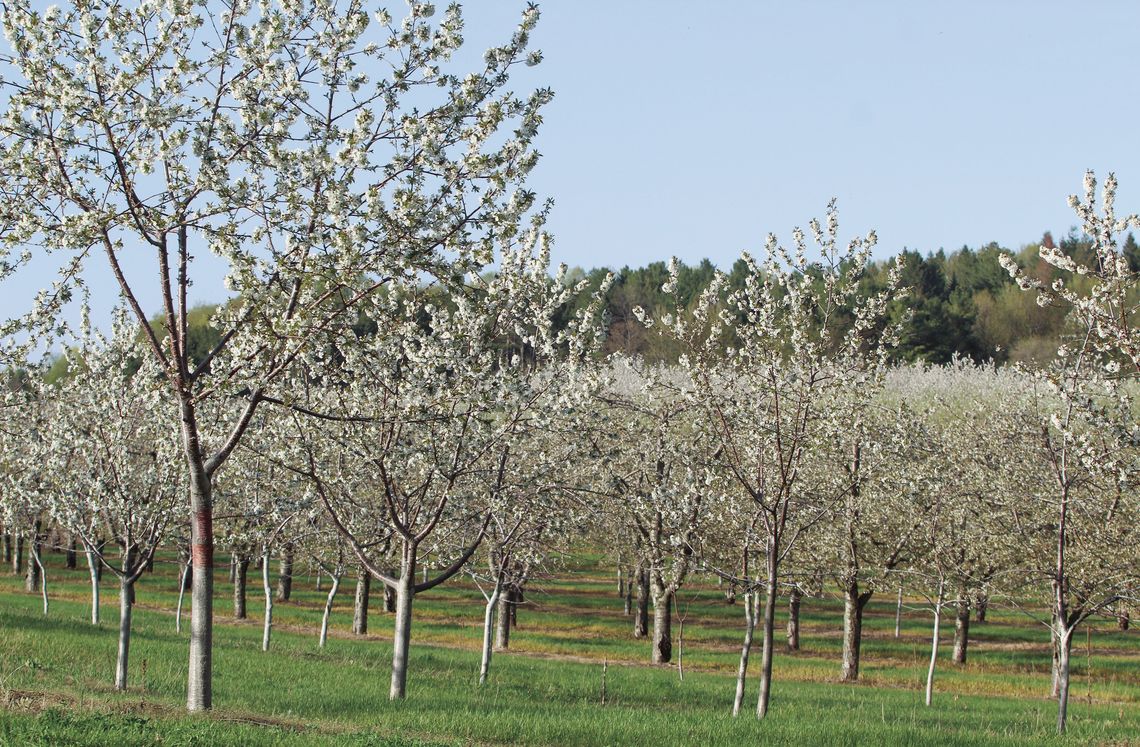The majority of sweet and tart cherry trees in the northwestern region, both varieties of which are past peak bloom, are chugging along as cold, and sometimes wet weather patterns are expected to continue through Memorial Day weekend.
Last week, the Northwest Michigan Horticulture Research Center (NWMHRC) reported that despite the weather forecast originally predicting more warm and dry conditions in May, temperatures have been cooler than normal by about 10-20 degrees. East Leland, for example, received 1.8 inches of rain between May 13-18, and was considered the wettest spot in Northern Michigan during that period.
Nikki Rothwell, MSU Extension specialist and NWMHRC coordinator, said while they still have honey bees around in the orchard, most of them are probably going out this week. Rothwell said cherry trees might have already had a chance at pollination depending on when they opened.









